This post may contain affiliate links.
Fun fact!
Arizona has 22 official National Parks units, and 13 of those are National Monuments. That’s a lot for one state, especially considering there are only 84 National Monuments total in the US.
The Flagstaff area alone has 3 National Monuments: Wupatki, Walnut Canyon, and Sunset Crater Volcano.
Each of the 3 Flagstaff monuments are very different, yet also very much connected culturally. Ancient Sinaguan people once inhabited the areas preserved by the 3 National Monuments, leaving behind their villages, or pueblos, when they moved on.
Wupatki National Monument is a spectacular place to experience and walk amongst those ancient ruins.
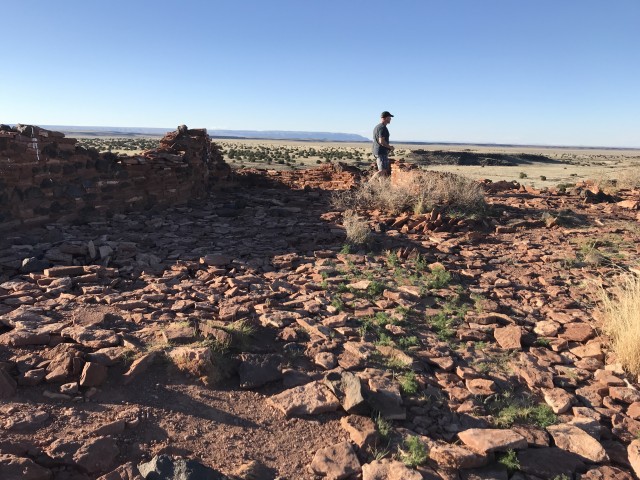
Wupatki National Monument is located at the northern end of the 35-mile-long loop road that connects with Sunset Crater Volcano National Monument, which is at the south end. You can enter at either end for access to both Wupatki and Sunset Crater Volcano.
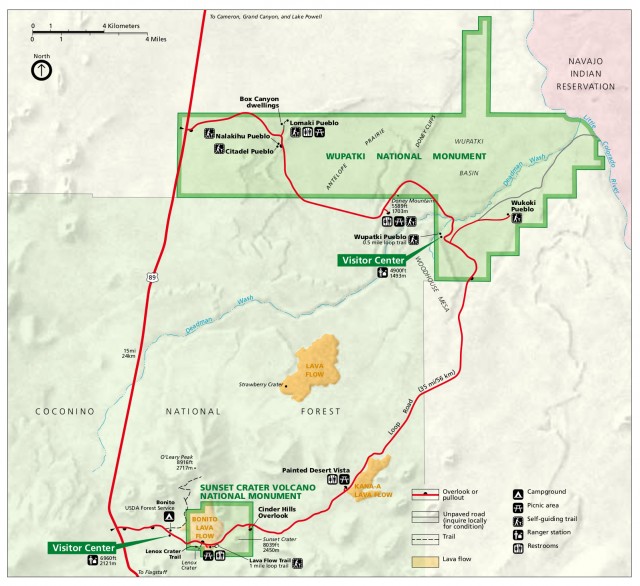
The monument features remarkably well-preserved ruins, many of which you can actually get inside and explore.
In total there are more than 800 identified ruins within Wupatki National Monument, but the only sites open to visitors are right off the main road; five of the largest are Wupatki, Wukoki, Lomaki, Citadel and Nalakihu.
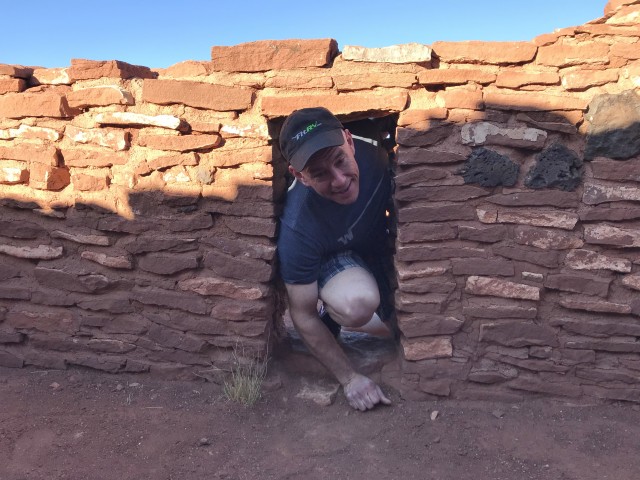
Come on, this couldn’t have been an actual doorway… could it?!?!
At the peak of Wupatki’s cultural development, it’s estimated that 2,000 people would have lived in this entire area, within a day’s walking distance from each other.
According to the Hopi Indians, Wupatki means “Tall House”.

Wupatki Visitor Center is well into the park, located next to the largest of the ruins, Wupatki Pueblo. The rangers there loan out guide books that explain what you’ll see on the 1/2 mile trail just outside the visitor center. It’s marked with numbered stops, and certainly makes for a fascinating look into how the people lived back when the pueblo thrived.
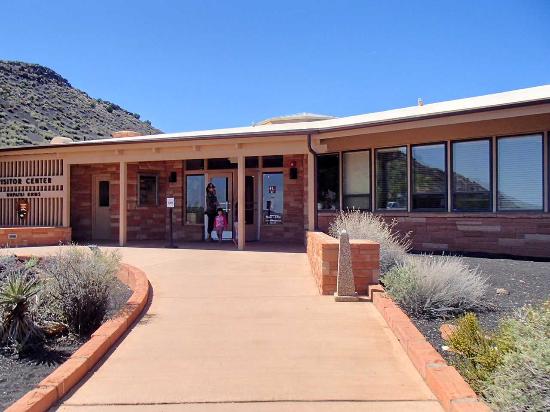
Though the area’s human history goes back thousands of years, there was an influx of residents after the volcanic eruptions of Sunset Crater around the 11th century. The people abandoned the area and moved on in the early 1200’s. It’s not totally clear why.
The Wupatki Pueblo itself is just incredible to see. It had more than 100 rooms. In its heyday it likely housed around 300 people.
Wupatki Pueblo was not only the largest pueblo during those times, it was also the most influential. It was the trading center for the area. You can still see today the large community room, ball court, and kivas where people would have gathered, played, participated in religious ceremonies, and carried out their daily lives.
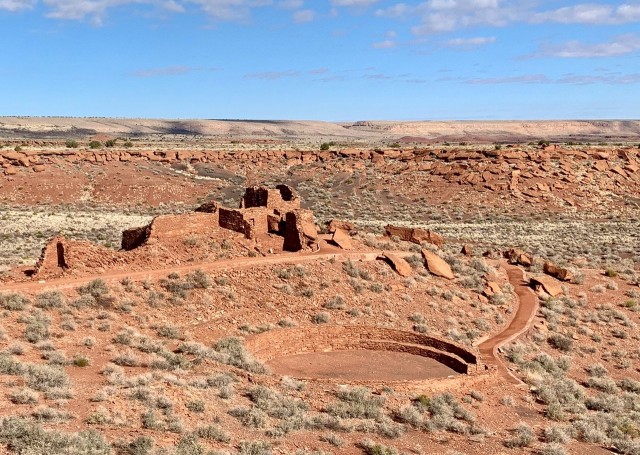
Here’s another strange and wonderful feature you’ll find at Wupatki:
A blow hole!!!
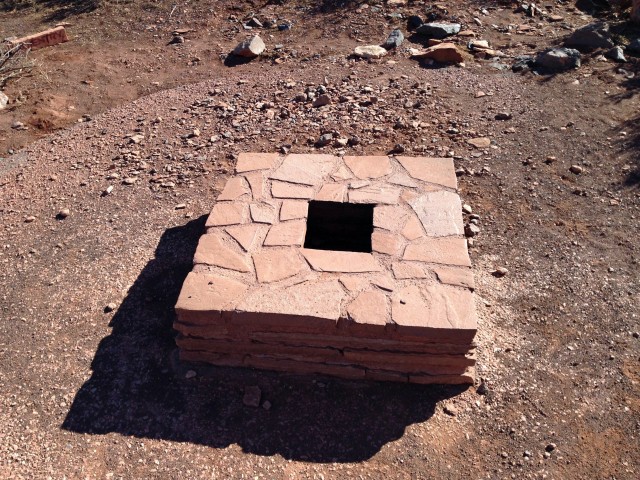
It’s not clear what, if any, use the blow hole served for the ancient residents of Wupatki.
A blow hole is a small opening in the ground where air either blows out or sucks in—a sort of natural vacuum or fan. Sort of like the Earth is breathing!!!
Blow holes connect with an extensive underground fracture system which can sometimes be hundreds of feet deep, depending on the blow hole. There are a few known blow holes around Arizona.
Before the box was placed over Wupatki’s blow hole in 1965, explorers were able to descend 18 feet down the hole before it became too constricted to continue.
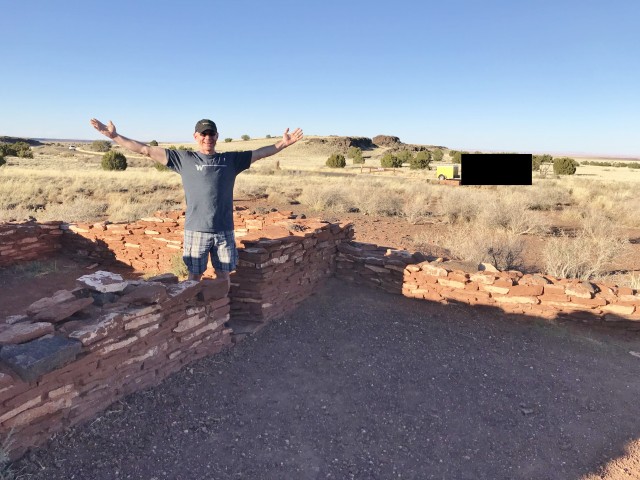
The pullouts had plenty of space for RVs, so we’d certainly encourage you RVers to enter without any concerns.
During our visit, there were hardly any other people around; which made parking no trouble at all. Plus it gave the monument a remote and peaceful vibe.
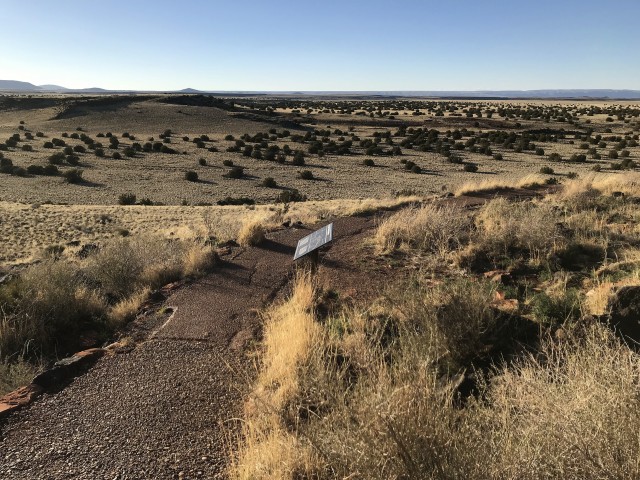
Having those ruins to ourselves also made it a more reverent experience.
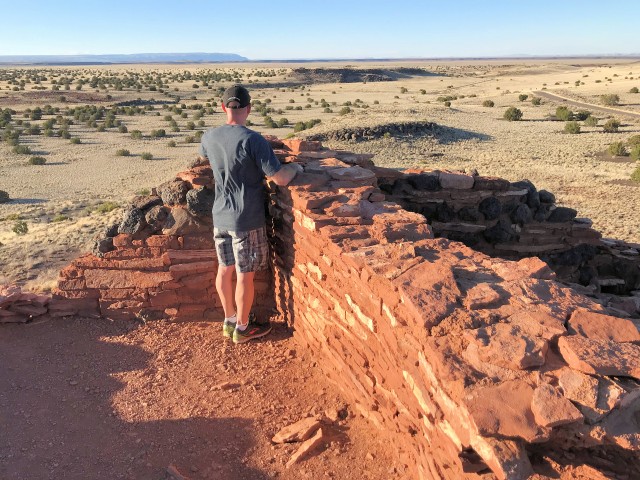
I’m not sure how to do it justice in words, but Wupatki has a strange, numinous beauty that left us both quiet and contemplative as we explored. I know, shocking… us quiet.
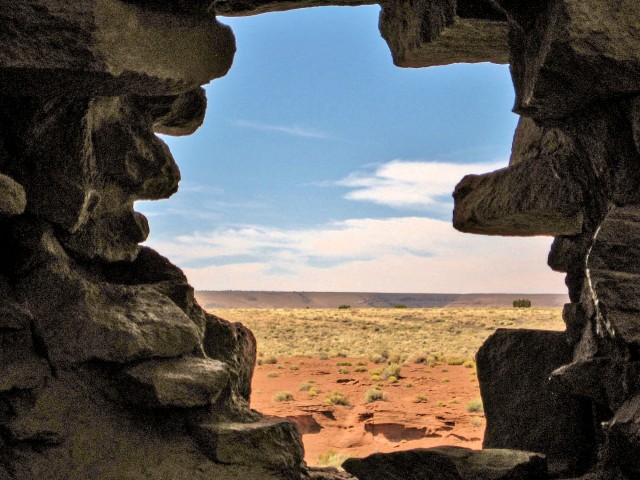
You’re standing there on sacred grounds, surrounded by the remnants of an ancient culture; it’s hard not to be affected. It was windy while we visited, and I liked to imagine the wind carried whispers of very ancient voices. It left me with a feeling we weren’t really alone, even though we were. There is something transcendental there.

It is especially magical closer to sunset, and we took advantage of that time and climbed to the Citadel where we watched the sun begin its sink over the valley.
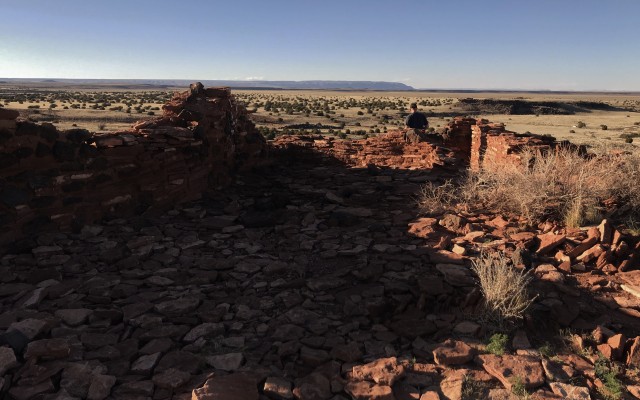
How unfortunate that most people pass right on by the Flagstaff area National Monuments as they head for Grand Canyon National Park! Wupatki is amazing to visit and in my opinion, just as memorable.
Hope you’ll put this fascinating AND beautifully haunting National Monument on your RV bucket lists!
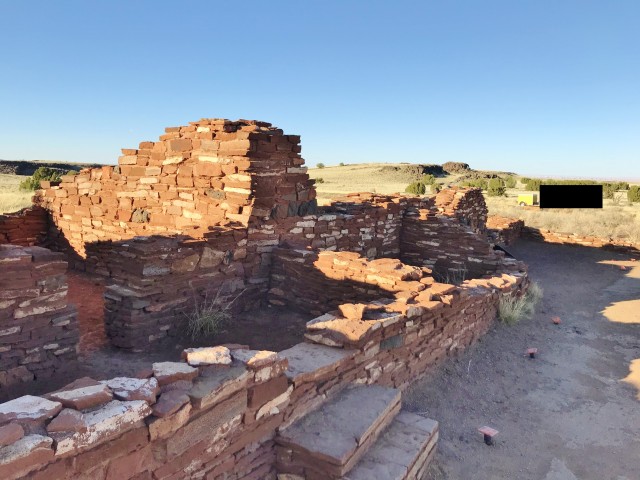
Who else has been here? Would love to hear about your own experiences… comments below always welcomed!
xoxo, Stef (and James, Mel, and Parky!!!)



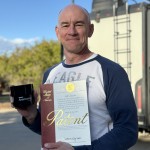







Why is James trying to use the cat door?
I, too, really enjoyed Wupatki which I explored after seeing Petrified Forest National Park and Walnut Canyon and Sunset Crater National Monuments. Like you I marveled at being able to walk among the ancient ruins and contemplate what life was like so long ago. Walnut Canyon dates from around the same time but consists of cliff dwellings rather than pueblos, and it is equally spectacular.
Thanks for sharing Judy! So nice to know I’m not alone in my awe of this amazing place. xoxo
One of our favorite parts of our travels was coming upon these ruins with no prior warning. This is the true power of traveling in a small van is the ability to wonder and find the un-planed. It is amazing how many sites dot the roadway and that you can walk right up and climb in and explore. This is a rare thing today as most of the world is going behind glass, rope, and railings. A great way to spend an afternoon exploring.
Wonderful you stumbled on it unplanned! And so very true, getting to freely explore and experience ancient ruins is certainly a rare treat. Yet another reason Wupatki is such a treasure.
We loved Wupatki! I was amazed when we toured Wukoki Pueblo and saw 800 year old post ends still embedded in the walls. We were told Wukoki was not rebuilt. Those stones were stacked by native hands 800 years ago and they still stand! I wonder how long the structures we build today would survive without maintenance.
It makes me think of the ghost town Rhyolite, which was a booming prosperous town in 1905 where today only a handful of buildings, mostly crumbled and in ruins, are left. Rhyolite is another fascinating RV stop, but they certainly could have used some guidance from the Sinaguan culture on how to build structures that last!
My post describing our visit to Rhyolilte: https://www.thefitrv.com/blog/rhyolite-ghost-town-bucket-list-check/